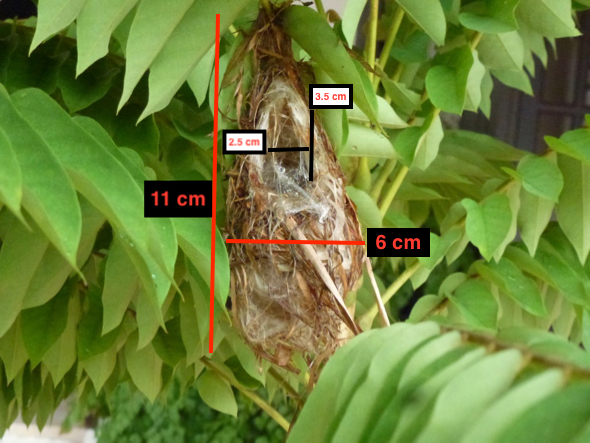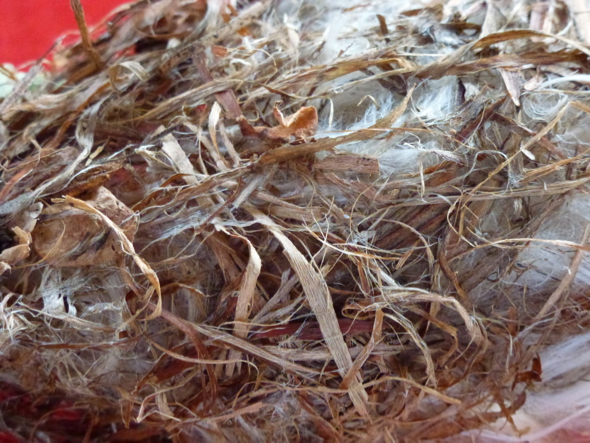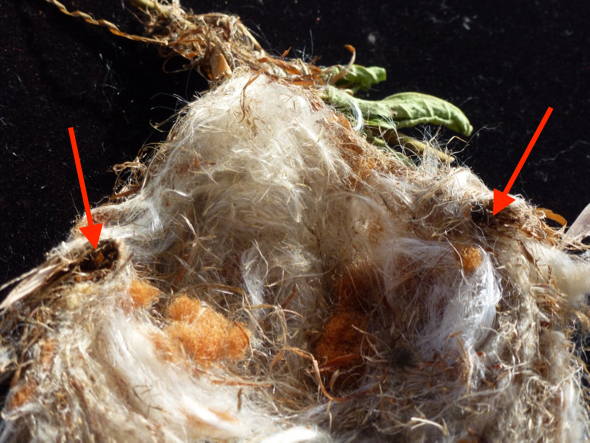Earlier posts: 1. Introduction; 2. nesting materials; 3. Nest taking shape; 4. Lining egg chamber; 5. Finishing touches to nest; 6. Pre-egg laying days; 7. Has an egg been laid?; 8. Female incubating her egg?; 9. Nest abandoned.
Two weeks after the nest was abandoned it was collected and examined.
The nest of the Scarlet-backed Flowerpecker (Dicaeum cruentatum) is a pear-shaped structure of 11cm x 6 cm dimensions with an oval entrance of 3.5 x 2.5 cm near the top (above).
The entire nest is tied to the axis of a single compound leaf of the Belimbing (Averrhoa belimbi) tree with plant materials and is about 2 m above ground (above, below).
The outer part of the nest consists of a sparse tangle of dried plant materials, mainly narrow strips of leaves, thin roots, etc. (below). Between these strips can be seen the white floss that is used to line the inner egg chamber.
The lower rim of the nest opening where the flowerpecker lands has been reinforced – elongated strips of dried leaves bunched together by pieces rolled round the entire length as well as by pieces of floss (below, arrowed).
The image below shows the nest rim cut through showing the reinforcement.
The nest is made up mainly of white plant floss that I have been unable to identify. Can it be from the flowers of Wild Water Plum (Wrightia religosa), also known in Cantonese as Sui-mei. Also, there are clumps of a brownish floss, yet unidentified (above).
Any suggestions welcome.
YC Wee
Singapore
1st February 2018














